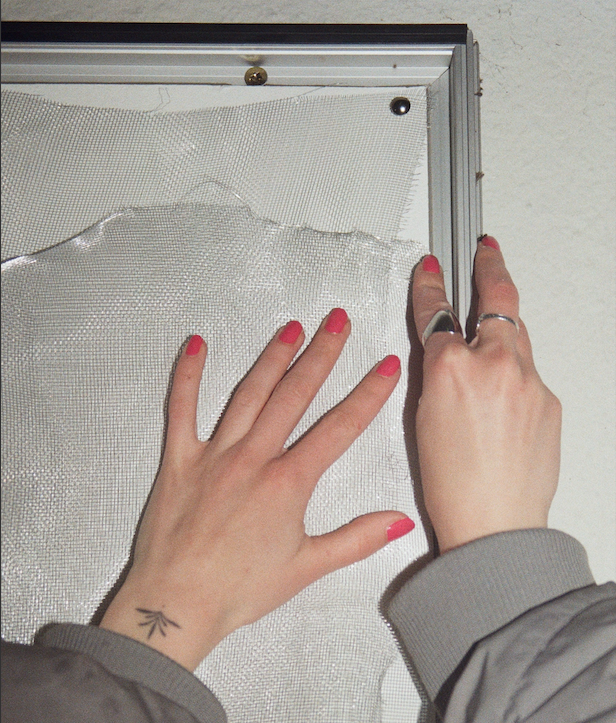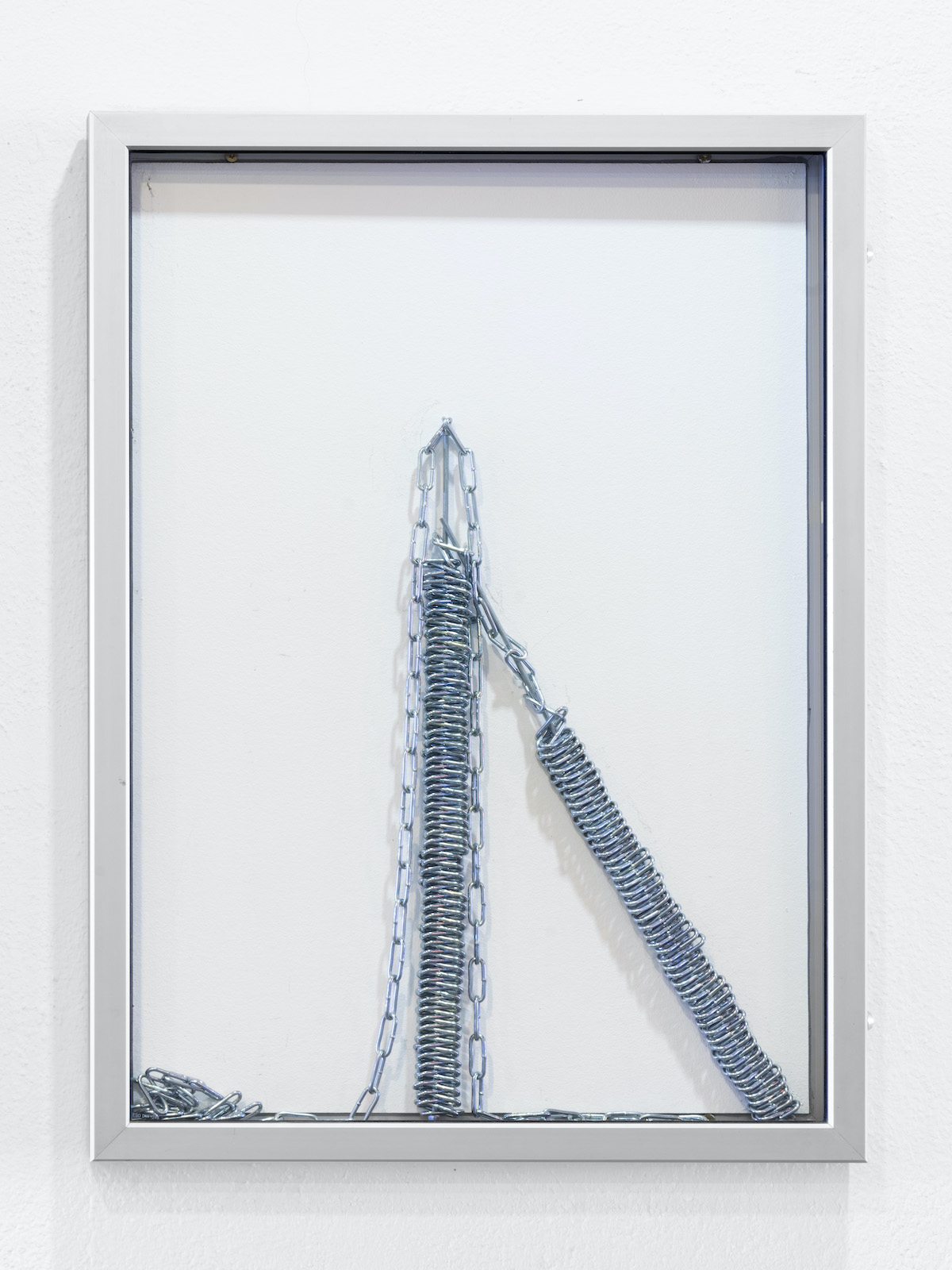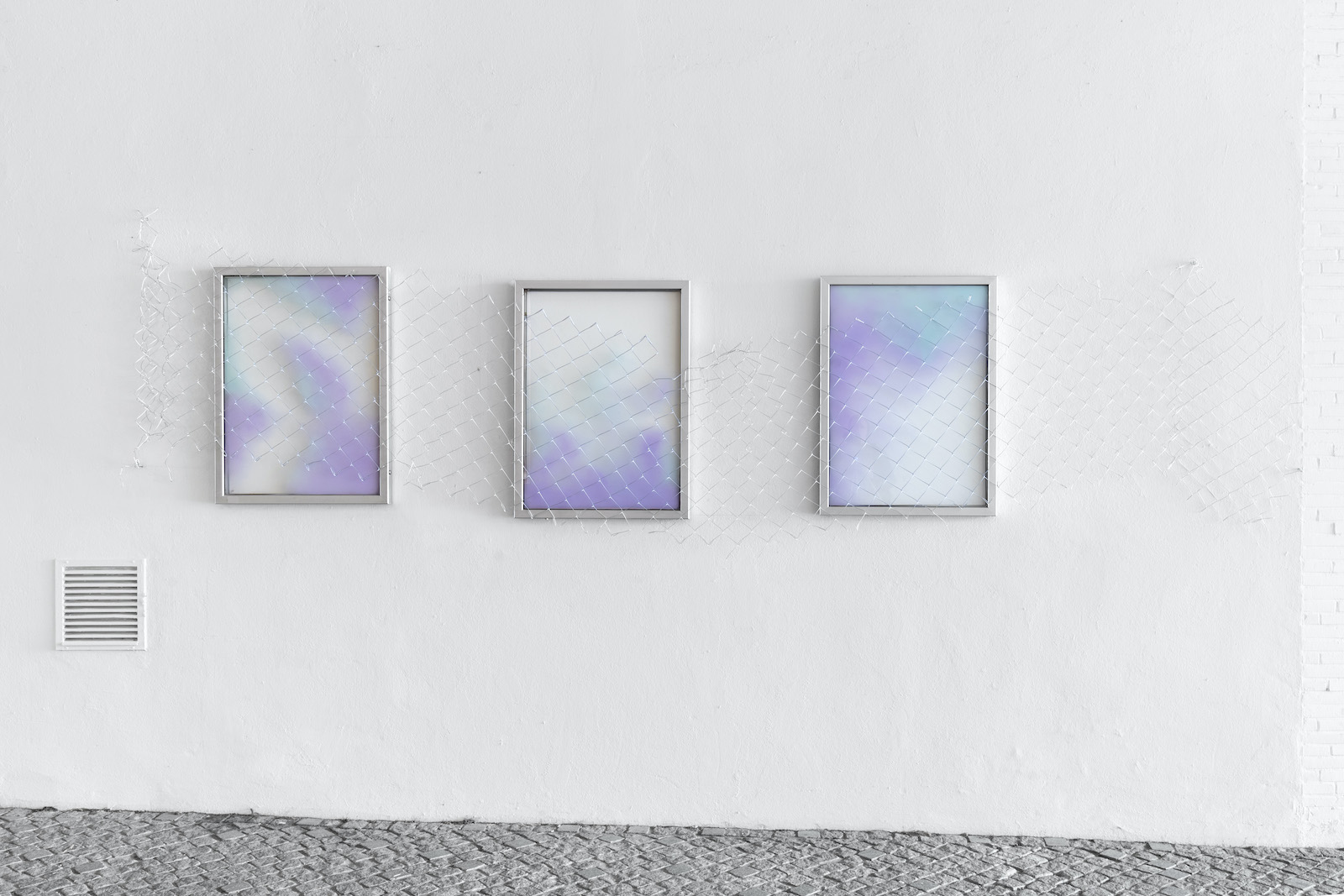
Verkettung [concatenation] is the title of Karina Burjakov’s exhibition in the GAK poster frames. It is the fourth in our exhibition series “Re-Framing.” While the first three exhibitions were still in the realm of printed matter, this one leaves the flatness of paper. In fact, it doesn’t happen on paper at all. Instead, Karina Burjakov works with link chains and ball chains, aluminum mesh and mirror film, putty, spray paint, and chain-link fence. In and on the poster frames, distinct parts slide into one another, line up, hang through and over each another. Here, concatenation refers to the connections between the materials as well as the series of decisions made.
Chains and wire represent barriers and demarcations in public space. Karina Burjakov detaches them from their contexts and brings them into new relationships as abstract forms. What interests me about Karina Burjakov’s material collages is how images emerge from a few sets, usually in interaction with the wall, and how foreground and background shift into one another, extending into the viewer’s space. In the poster frames, her works—titled Skizze [sketch], Wirr [confused], Sprühgelb [spray yellow], Drüberdrunter [topsy-turvy], Verfangen [entangled], Aufgefädelt [strung], Übereinander [on top of each other], and Raus [out]—tell of the confrontation with these border areas. Life in public is a concatenation of constant attempts to come to terms with expectations, enclosures, separations, and promises. There are the promises of advertising, labels, and styles, for example, but also the assertion of institutions that everything will be just fine when well sorted and brought into shape.
Karina speaks of collages, but for me her works are still paintings. Once putty presses through the aluminum mesh, traces of chain links can barely be discerned, elsewhere chain-link fence lies on top of a blue-pink horizon. In between, and in every material used, there are voids and interstices to slip through.
Karina Burjakov (*1997 in Lebedino, Russia) lives and works in Bremen. Since 2020 she studies at the HfK Bremen in the class of Stephan Baumkötter. She is concerned with the question of the spatial expansion of the image as a material and as a visual appearance.
Her works are located in the fields of collage, painting and installation.
Within the poster frame series “Re-Framing“
Fr, 28.04.23, 8 pm
Opening
Support
“Re-Framing” is made possible with the kind support of Kultur.Gemeinschaften, the joint funding program for digital content production in cultural institutions of the Federal Government Commissioner for Culture and Media and the Cultural Foundation of the Federal States.











